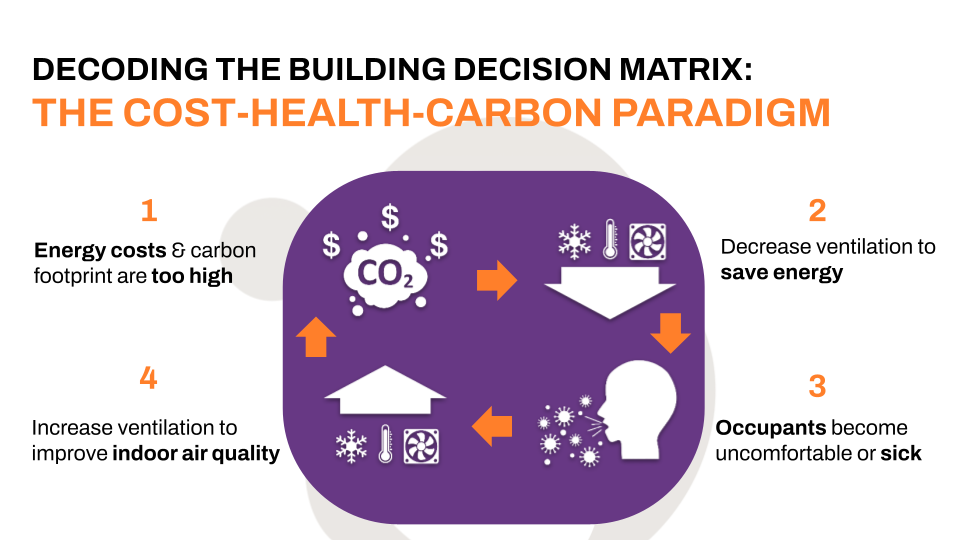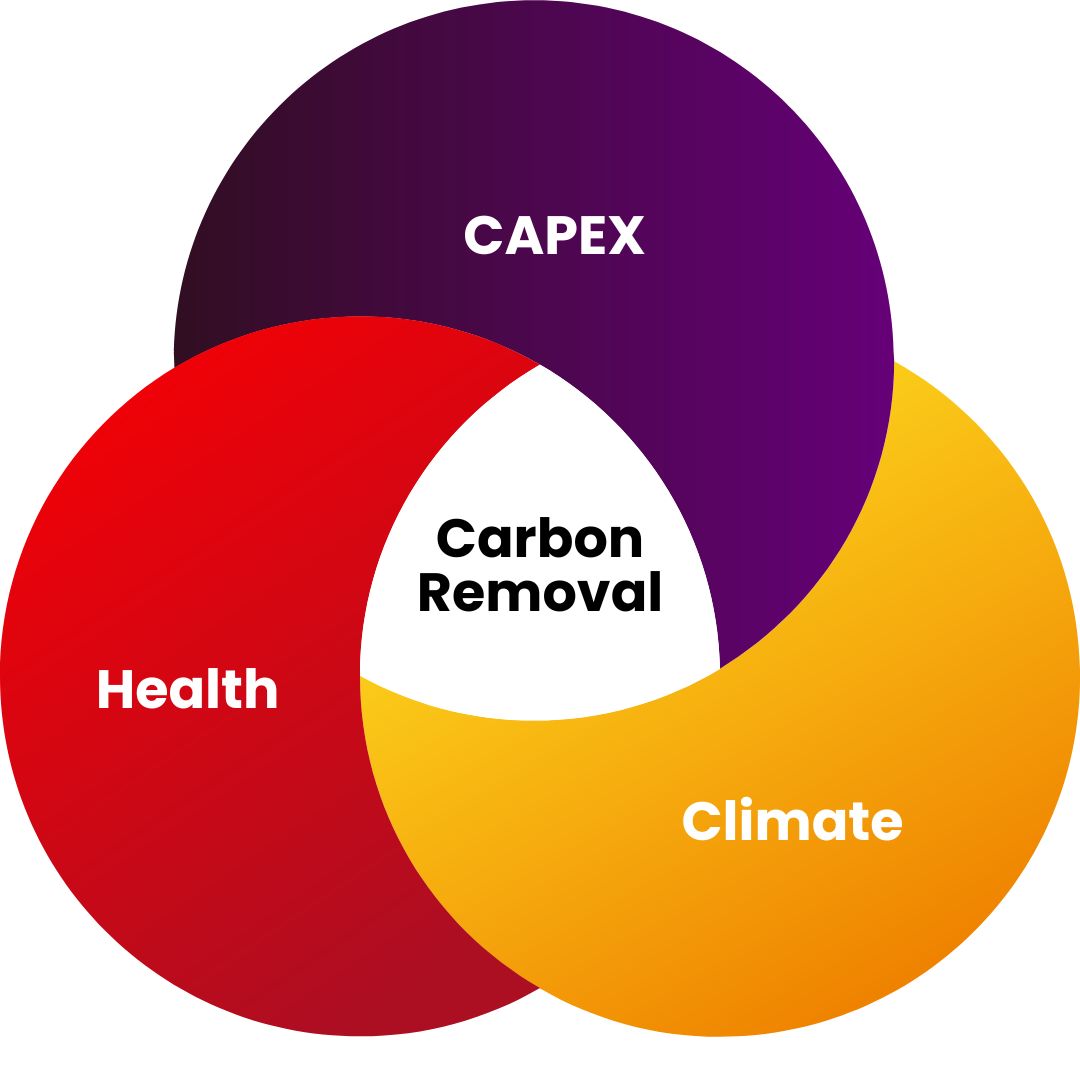
After Covid-19 and an increasingly more severe forest fire season, the general public has a growing consciousness about air quality and the impact it has on health. As a building owner or manager you wear many hats, and now it’s your responsibility to ensure adequate air quality, work to decrease building emissions, and maintain a profitable business model.
If you don’t, you might find yourself facing trouble with tenant retention, decreasing suite values, higher electric costs, or emissions penalties from your local government. Any one of these costs can be hard to stomach on their own; mix in two or three and you’re looking at a serious hit to your bottom line. So, what’s the solution?
In this post, we’ll explore commercial air purification options, weighing the pros and cons, so you can decide the best path forward for your building.
Exploring the Air Purification Market
Based on top google results, you might turn to traditional air purification systems on the market. Two of the most popular include ionization and HEPA filtration. You’re likely familiar with these systems on some level—perhaps you’ve seen them in a friend’s home, or you may even have one yourself.
Air Ionizers
Air ionizers are used to lower the amount of bacteria, dust, and other particles in the air. It works by releasing charged ions into the air, which helps the particles clump and land on surfaces like walls or floors, which can then be cleaned. Some ionizer devices have a collection system to attract the charged particles into the unit itself.
HEPA Filters
HEPA stands for high efficiency particulate air (filter). Instead of charging particles to weigh them down, it works by circulating air through a filter. As the air passes through, the particles are filtered out of the air and captured within the filter itself. While this does remove dust, pollen and other particles from the air, it can only purify the air that is passed through the filter.

Do Air Purifiers Address CO2 Levels?
While the solutions above may help remove allergens and bacteria from the air, they don’t address carbon dioxide. This is notable for two main reasons:
- A bit like its friend carbon monoxide, Carbon dioxide can also have serious impacts on health. Mild CO2 levels are known to cause headaches and drowsiness. Whereas higher levels of exposure can lead to more severe health concerns such as rapid breathing, confusion, elevated blood pressure, and heart concerns.
- With air purification alone, you still have to have adequate ventilation to address the amount of CO2 in the air. In this way, building managers and owners are increasing their energy spend by purchasing air purification systems and paying to run and maintain those new systems while still spending the standard amount to heat and cool freshly ventilated air.
How to Address Costs, CO2 and Air Quality
As a building owner or manager, you’re often faced with an impossible choice between cutting building costs, improving occupant health, and reducing carbon emissions. This is what we call the cost-health-carbon paradigm.

In order to cut your energy use and costs, you decrease ventilation. While this saves energy, you notice that your residents are becoming increasingly sick or submitting requests for improved air quality. To address these concerns, you either have to increase ventilation to improve indoor air quality or invest in air purification solutions like ionization or HEPA filtration. Both of these options increase energy usage, costs, and your carbon footprint—putting you right back where you started.
This is where carbon removal comes in.
How Does Carbon Removal Solve the Cost-Health-Carbon Paradigm?
Working in tandem with your current HVAC system, some carbon removal technology removes allergy and illness causing particulates while also removing the CO2 from the air—all without adding any additional energy usage to your current operating system.This means you can recirculate your building’s air for longer, without having a negative impact on air quality. This, in turn, lowers costs associated with constantly heating and cooling outdoor air.
Reducing the amount of energy used to heat and cool your space lowers your building’s emissions. As an added bonus, you’re playing an active role in net-zero goals by permanently removing carbon from the atmosphere.
By working in tandem with your current HVAC system, carbon removal technology can rid your air of allergy and illness causing particulates while also removing the CO2 from the air—all without adding any additional energy usage to your current operating system.
In this way, carbon removal is a win for building costs, a win for occupant health and a win for the climate.

Not all Carbon Removal Technology is Created Equally
Carbon Reform’s technology works by attaching a modular system to your existing HVAC system. As air moves through the system to be heated and cooled, our Carbon Capsule purifies the air while simultaneously removing the CO2.
There are other solutions in the market that make similar claims about their products, but that’s where the similarities stop. Here’s what makes Carbon Reform different:
Permanent Removal
The CO2 then goes through a chemical process, resulting in a material byproduct that can be utilized as a green building material in the future. In this way, Carbon Reform provides permanent carbon removal. Other solutions in this space aren’t able to permanently remove CO2, meaning they rerelease the CO2 back in the building at night.
Equitable Access
At Carbon Reform, we believe that every person deserves to have access to safe, clean air—regardless of their financial circumstance. To act on this promise, our pricing model is based on anticipated energy savings. That means that your cost is calculated by estimating how much Carbon Reform will save on your electric bill over a 1-2 year period.
Affordable Pricing
This structure is significantly more accessible than other air purifier models, which force you to hand over thousands of dollars to update or retrofit your existing HVAC and air purification system. Our Carbon Canister is shown to save up to 40% on HVAC cost, with a payback period of 2 years from installation. That means you can have happy tenants and a healthy bottom line.
A Smarter Path to Cleaner Air
Carbon Reform’s patented technology is creating a new and better way to lower costs and emissions while improving air quality. Co-founders Jo Norris and Nick Martin are dedicated to making people-centered, making Forbes 30 under 30 list for their innovative technology and social impact.
Schedule your meeting today to learn more about how Carbon Reform can help you cut energy costs!
